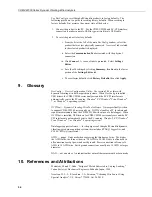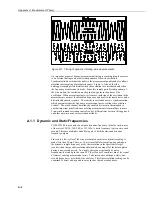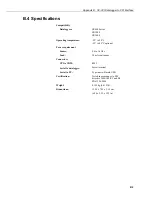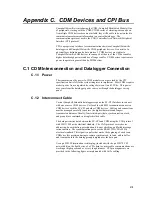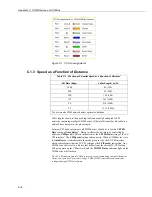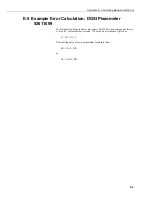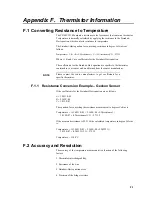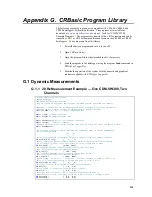
Appendix C. CDM Devices and CPI Bus
C-3
C.1.4 CPI Grounding
To keep the common mode of the signals in range, a common reference (ground)
connection is advised for any non-isolated communication link. If a ground
potential difference exists, then current will flow on the common wire from one
end of the cable to the other. This current is restricted only by the dc resistance of
the common wire which is often quite low. To increase this resistance, a 100-Ω
resistor is placed inside each CDM device, SC-CPI interface, or CDM equipped
datalogger between the CPI ground and the local ground. This is a compromise
between directly connecting the two points and leaving the common connection
entirely disconnected. It limits current while still helping to prevent the two node
voltage potentials from drifting too far apart.
C.1.6 Addressing
The CPI bus uses an addressing scheme that supports up to 120 CDM devices on
the bus connected to a single SC-CPI interface. In the case of the CDM-VW300,
fewer devices must be used because of limitations of bandwidth caused by high-
speed measurement rates. Future CDM devices may be used on a CPI bus
managed by a SC-CPI interface device connected to a datalogger.
C.2 Distributed Architecture
CDM devices can operate with longer cable distances between modules and the
datalogger than might be expected for sub-second data acquisition. A common
long cable network is illustrated in the following Figure C-2.
The CDM-VW300 uses the CPI communications protocol to communicate with
Campbell Scientific dataloggers or other CDM devices. Two CPI connectors are
provided on each device. The network kit supplied with each CDM device
provides yellow tape with which to optionally mark RJ45cables dedicated to CPI
communications.
A single CDM device can be connected to a CR800 series, CR1000, or CR3000
datalogger using an SC-CPI interface. One CPI port on the CDM device connects
to a CPI port on the SC-CPI. The other CPI port is terminated with a CPI
terminator (supplied with pn #29370 network kit). When multiple CDM devices
are used in a daisy-chain topology, one CPI port of the CDM device nearest the
datalogger connects to the SC-CPI interface and the other CPI port connects to a
neighbouring CDM device. Any CDM devices in the middle of the chain will
have both CPI ports connected to neighbouring CDM devices. Once CPI port of
the CDM device at the end of the CPI bus/chain connects to a neighbouring CPI
device, and the other port is fitted with a termination plug (pn #28558). Contact a
Campbell Scientific application engineer for information about using an optional
star topology.
Summary of Contents for CDM-VW300 Series
Page 2: ......
Page 4: ......
Page 6: ......
Page 12: ......
Page 59: ...User Manual 47 Figure 7 16 LoggerNet connect screens showing frequencies from CDM VW300 ...
Page 70: ...CDM VW300 Series Dynamic Vibrating Wire Analyzers 58 ...
Page 76: ...Appendix B SC CPI Datalogger to CPI Interface B 4 ...
Page 80: ...Appendix C CDM Devices and CPI Bus C 4 Figure C 2 Long cable lengths of a distributed CPI bus ...
Page 86: ...Appendix E Calculating Measurement Error E 4 ...
Page 116: ...Appendix G CRBasic Program Library G 26 ...




